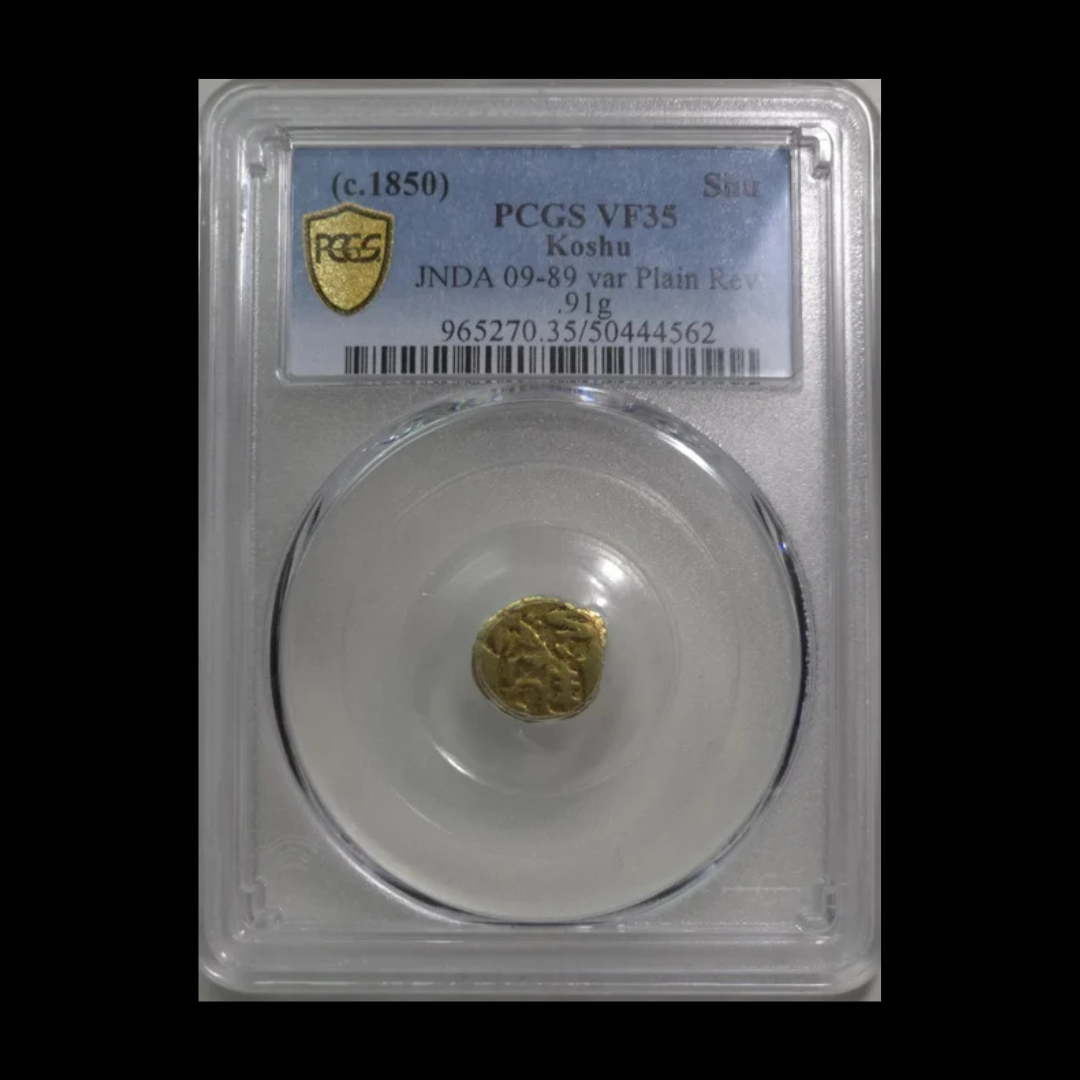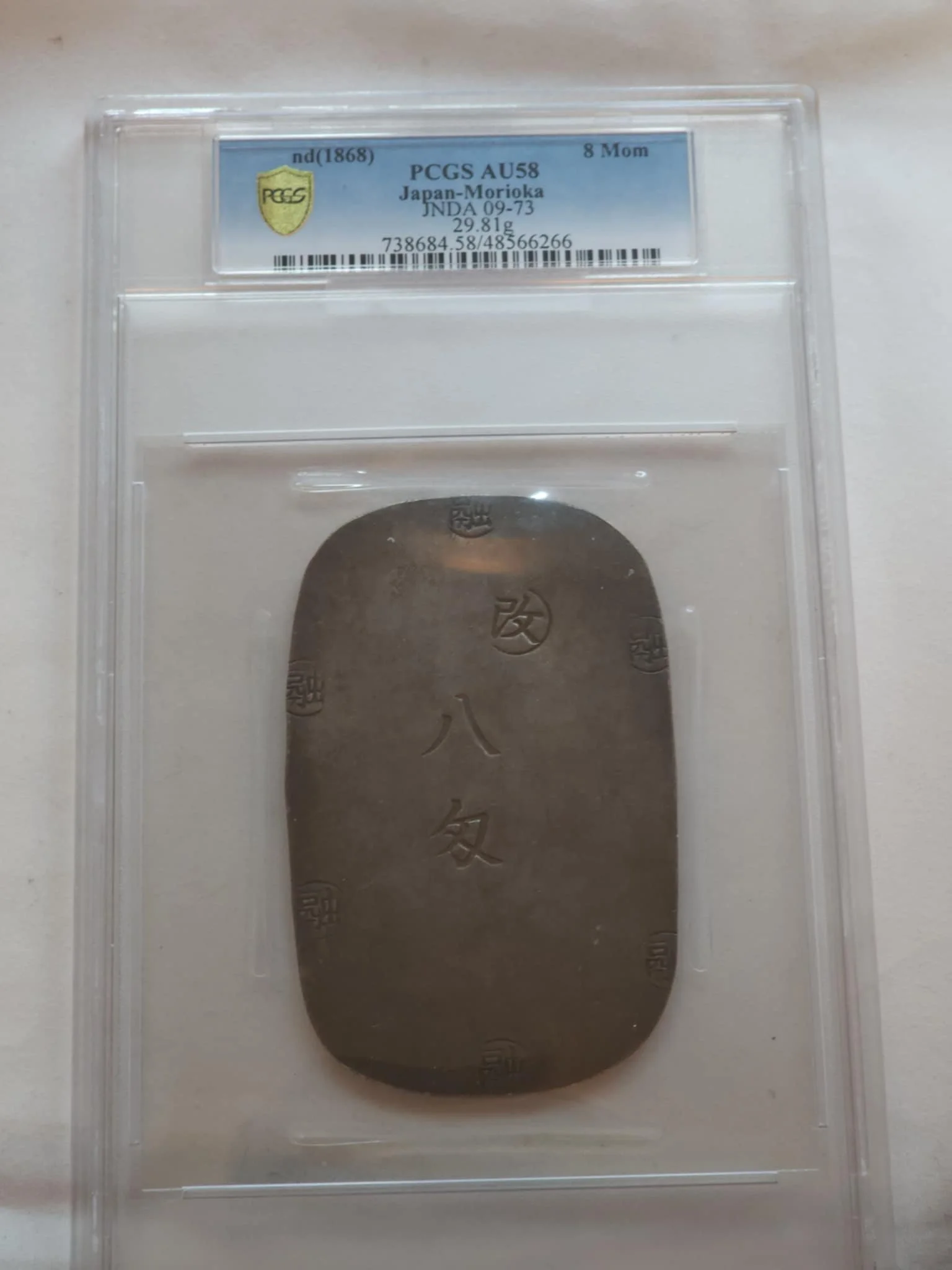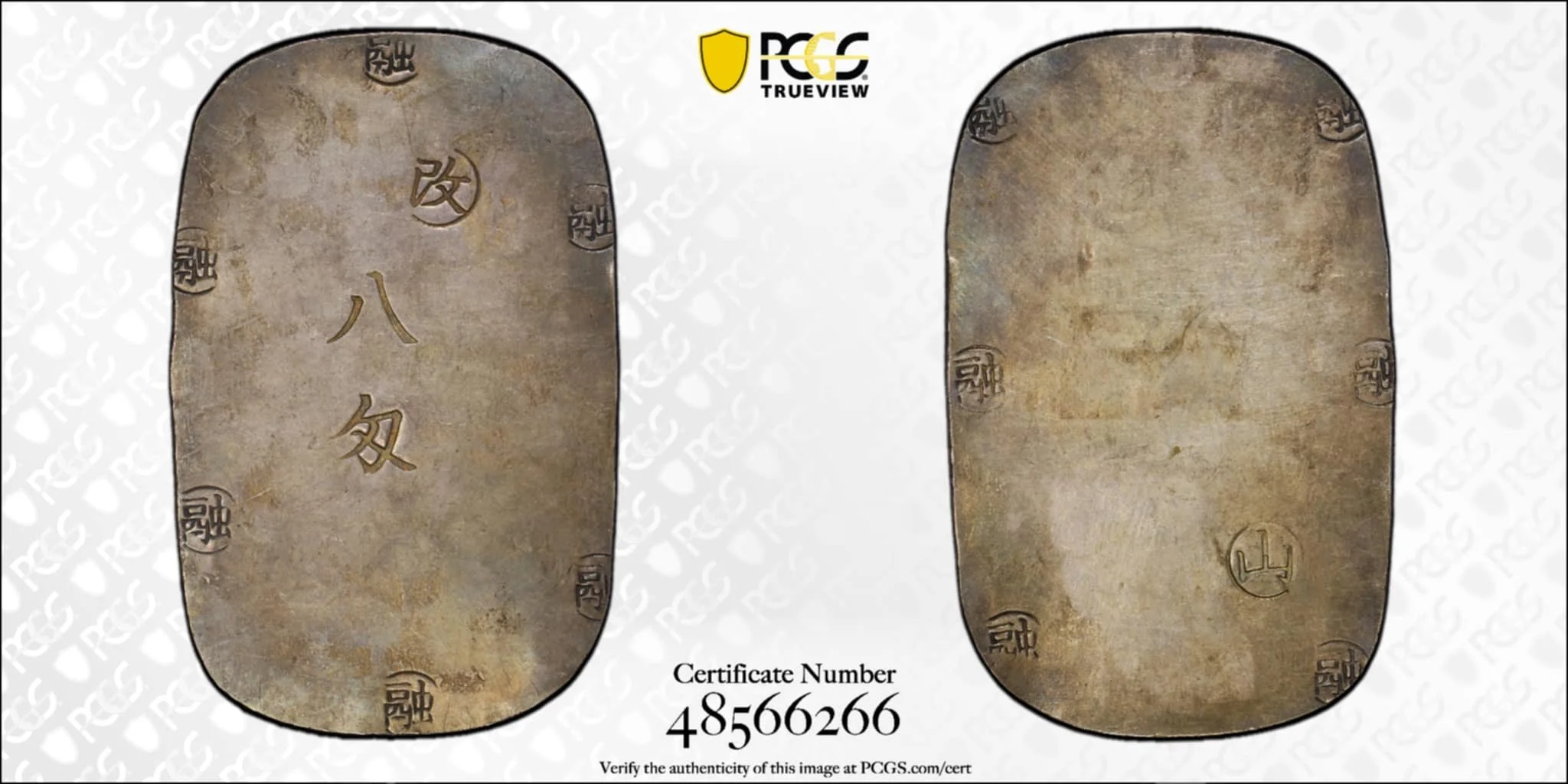 Image 1 of 4
Image 1 of 4

 Image 2 of 4
Image 2 of 4

 Image 3 of 4
Image 3 of 4

 Image 4 of 4
Image 4 of 4





Japan — Tenpō Era Mam Gin “Daikoku” Type (AD 1837–1858), JNDA 09-68, PCGS AU53 (c. 165–185 years old)
Japan — 1837–1858 Tenpō Era Mam Gin “Daikoku” Type — PCGS AU53
JNDA 09-68
A bold and impressive survivor of Japan’s late Edo-period silver trade coinage, this large Mam Gin (“bean silver”) bar was issued between 1837 and 1858 under the Tokugawa Shogunate. Known as the Daikoku Mam Gin for its prominent daikoku (“great fortune”) character, the design references Daikokuten, the god of wealth and commerce, making it a fitting emblem for merchant transactions in an era of expanding domestic trade.
Cast in high-grade silver and individually stamped with official hallmarks, these Tenpō-era Mam Gin served as high-value currency, circulating alongside koban gold pieces among merchants and wealthy households. This example, graded PCGS AU53, retains exceptional detail for the type — the daikoku mark is crisp and bold, the additional assay stamps are sharp, and the surfaces display a soft, original patina that speaks to its untouched nature.
A scarce and highly desirable piece of pre-Meiji Japanese bullion coinage, offering both impressive size and a tangible link to the commercial lifeblood of Tokugawa Japan.
Japan — 1837–1858 Tenpō Era Mam Gin “Daikoku” Type — PCGS AU53
JNDA 09-68
A bold and impressive survivor of Japan’s late Edo-period silver trade coinage, this large Mam Gin (“bean silver”) bar was issued between 1837 and 1858 under the Tokugawa Shogunate. Known as the Daikoku Mam Gin for its prominent daikoku (“great fortune”) character, the design references Daikokuten, the god of wealth and commerce, making it a fitting emblem for merchant transactions in an era of expanding domestic trade.
Cast in high-grade silver and individually stamped with official hallmarks, these Tenpō-era Mam Gin served as high-value currency, circulating alongside koban gold pieces among merchants and wealthy households. This example, graded PCGS AU53, retains exceptional detail for the type — the daikoku mark is crisp and bold, the additional assay stamps are sharp, and the surfaces display a soft, original patina that speaks to its untouched nature.
A scarce and highly desirable piece of pre-Meiji Japanese bullion coinage, offering both impressive size and a tangible link to the commercial lifeblood of Tokugawa Japan.


















